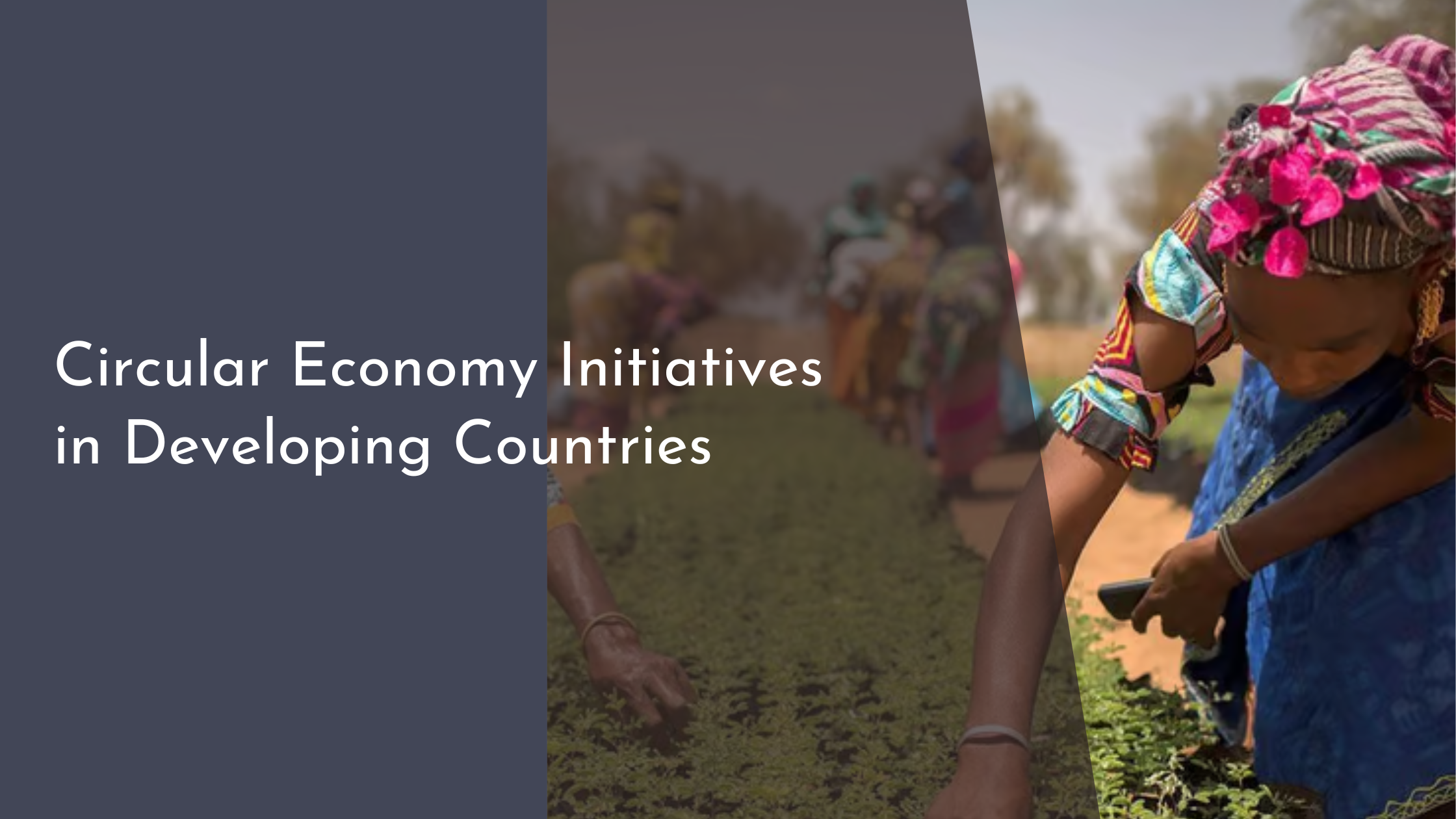Circular Economy Initiatives in Developing Countries
The circular economy is gaining traction worldwide as a sustainable alternative to the traditional linear economic model. While developed nations have led the charge in implementing circular practices, developing countries are increasingly exploring and adopting circular economy initiatives. These initiatives not only promise environmental benefits but also offer significant economic and social advantages. This article delves into the concept of the circular economy, its key benefits for developing countries, innovative initiatives that are making a difference, and the challenges and opportunities that lie ahead.
Understanding the Circular Economy Concept
The circular economy is a systemic approach to economic development designed to benefit businesses, society, and the environment. It focuses on redefining growth by decoupling economic activity from the consumption of finite resources and designing waste out of the system. The core principles of a circular economy include designing for longevity, maintaining products and materials in high-value use for as long as possible, and regenerating natural systems. This model contrasts with the traditional linear economy, which follows a ‘take-make-dispose’ pattern that results in significant waste and environmental degradation.
In developing countries, the circular economy concept is being embraced as a means to address pressing environmental challenges, such as waste management, resource scarcity, and pollution. By adopting circular practices, these nations can enhance resource efficiency, create sustainable economic opportunities, and improve living conditions for their populations. The circular economy also supports innovative business models and practices that promote sustainable growth and resilience against global economic fluctuations.
Key Benefits for Developing Countries
For developing countries, the adoption of circular economy practices can lead to substantial economic benefits. By reducing dependency on imported materials and resources, countries can lower production costs and enhance their competitive edge in global markets. Additionally, circular businesses and industries create new job opportunities, contributing to poverty reduction and economic empowerment for local communities. This shift towards a more sustainable economic model also fosters innovation and entrepreneurship, encouraging the development of new products and services that meet the needs of a growing population.
Environmental benefits are another vital aspect of the circular economy in developing countries. By minimizing waste and optimizing resource use, these nations can significantly reduce their carbon footprint and mitigate environmental degradation. This approach also helps preserve biodiversity and natural ecosystems, which are crucial for supporting agriculture and other critical economic sectors. Additionally, the circular economy promotes cleaner and healthier living environments, improving public health and overall quality of life.
Innovative Initiatives Making a Difference
Several innovative circular economy initiatives are making a significant impact in developing countries. In Africa, companies like Ecopost in Kenya are transforming plastic waste into durable and eco-friendly building materials, providing an alternative to timber and helping reduce deforestation. This initiative not only tackles the plastic waste crisis but also generates employment and contributes to the development of sustainable infrastructure. Similarly, in India, the social enterprise Saahas Zero Waste is implementing waste management solutions that prioritize recycling and resource recovery, creating a circular loop that benefits both urban communities and the environment.
Latin America also showcases inspiring examples of circular economy initiatives. In Brazil, the city of Curitiba is a pioneer in circular urban planning, incorporating waste-to-energy systems and community recycling programs. These efforts have significantly reduced waste generation and enhanced local resource management. Another noteworthy example is the Colombian start-up Conceptos Plásticos, which turns plastic waste into Lego-like bricks for building affordable housing. This innovative approach addresses both the housing shortage and environmental issues, demonstrating the multifaceted benefits of circular economy practices.
Challenges and Opportunities Ahead
Despite the promising benefits, developing countries face several challenges in implementing circular economy initiatives. Limited access to technology, infrastructure, and financing can hinder progress. Additionally, the lack of awareness and understanding of circular economy principles among businesses and consumers poses a barrier to widespread adoption. Governments also need to establish supportive policies and regulatory frameworks that encourage investment and innovation in circular practices. Addressing these challenges requires collaboration between public and private sectors, as well as international support and knowledge-sharing.
However, these challenges also present opportunities for developing countries to leapfrog to sustainable development. By embracing circular economy principles, these nations can become leaders in sustainable innovation, creating markets and industries that are resilient and adaptable to the future. Moreover, the transition to a circular economy can enhance international cooperation, with developing countries playing a crucial role in achieving global sustainability goals. With the right strategies and partnerships, the potential for growth and positive change is immense.
The shift towards a circular economy represents a significant opportunity for developing countries to achieve sustainable development and improve the quality of life for their populations. By embracing innovative initiatives and addressing existing challenges, these nations can create resilient economies that prioritize environmental stewardship and social well-being. As more developing countries adopt circular practices, they contribute to a global movement towards a more sustainable and equitable future, proving that economic growth and environmental conservation can go hand in hand.


